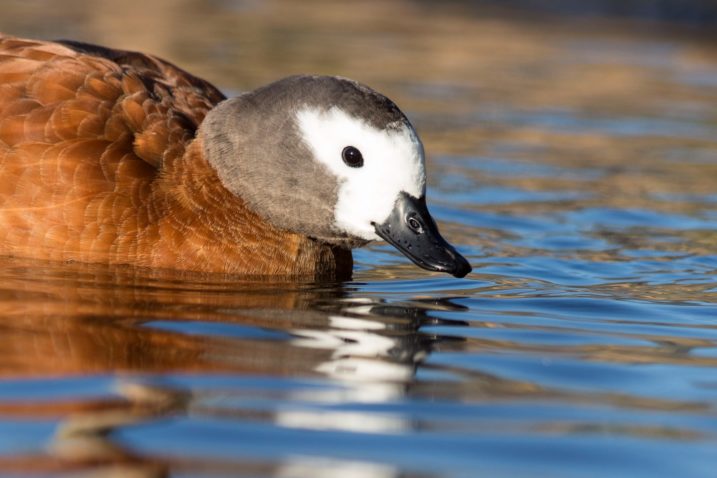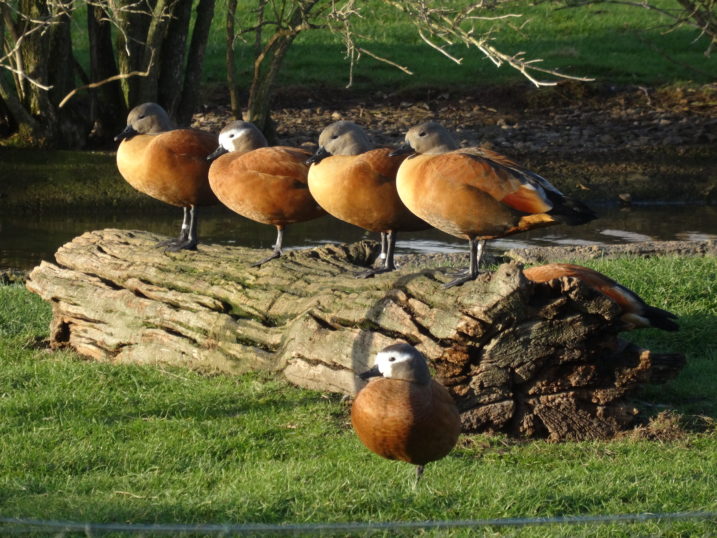Cape Shelduck
Who’s that nesting in an underground burrow? It’s the Cape shelduck! Cape shelduck originate from South Africa where they nest in disused aardvark burrows! You can see them here at Slimbridge in the Flamingo lagoon. Look out for the artificial nesting burrows we’ve created for them ready for their early breeding attempts in February.
Breeding plumage
Despite Cape shelduck being brown in colour it’s easy to tell the difference between and male and a female Cape shelduck - males have grey head and females have a white face. Their wings have distinct black and white feathers which help to identify individuals in the sky during flight. Juveniles grow their adult feathers in their first winter.

Nesting in underground burrows?
Cape shelduck have an unusual preference to use old mammal burrows as nesting sites, for example it has been shown that they are relatively dependent on aardvark burrows for nesting in some areas in their native African habitat.
Using mammal burrows is common in the bird world, from Puffins in rabbit burrows to burrowing owls using prairie dog holes, birds have learnt to use what they can to survive. Here at Slimbridge we create artificial nesting sites, as orchestrating the real thing can be near on impossible!
Laying eggs as early as February
Southern hemisphere shelduck lay eggs as early as February and March, meaning we have to be ready for these winter eggs!
Shelduck species lay lots of large eggs. When ducklings hatch they are mobile, large and independent, which really helps with their early lives. From hatching in a burrow, they move onto wetland habitats to feed.
Duckling nurseries
The ducklings enter the water and form large groups with other ducklings, called nurseries. These large groups are referred to as nurseries, with non-breeding adults supervising the ducklings.

The largest nursery recorded has reached numbers of 100 ducklings, however the average nursery size is 20-40 ducklings. Whilst in these groups Cape shelduck ducklings have the ability to dive in and out of the water, however when they get older they lose this ability favouring to dabble at the water’s edge.
Many ducklings have the ability to dive at moments of panic, but what makes the shelduck so interesting is that they have learnt to maximise this at a young age.
Feisty males compete for female attention
Cape shelduck are notoriously aggressive during the breeding season. They will compete with other males in order to breed with the females. The females find their dominant, aggressive behaviour attractive and will therefore breed with the feistiest male.

